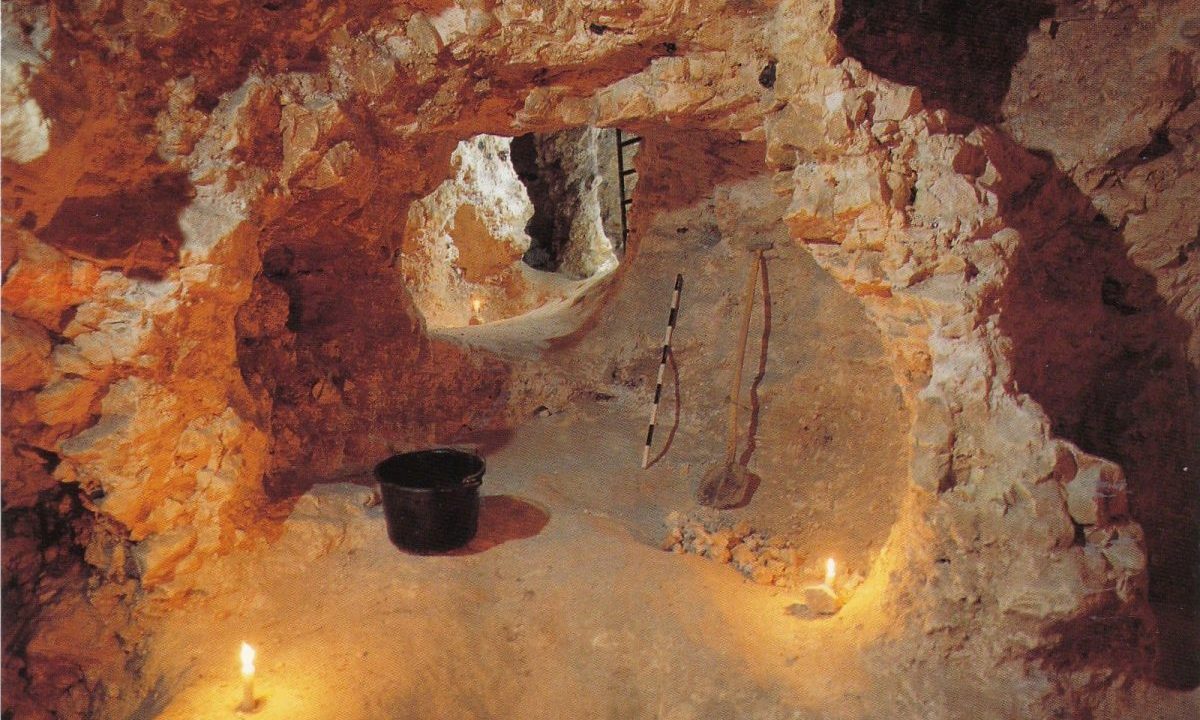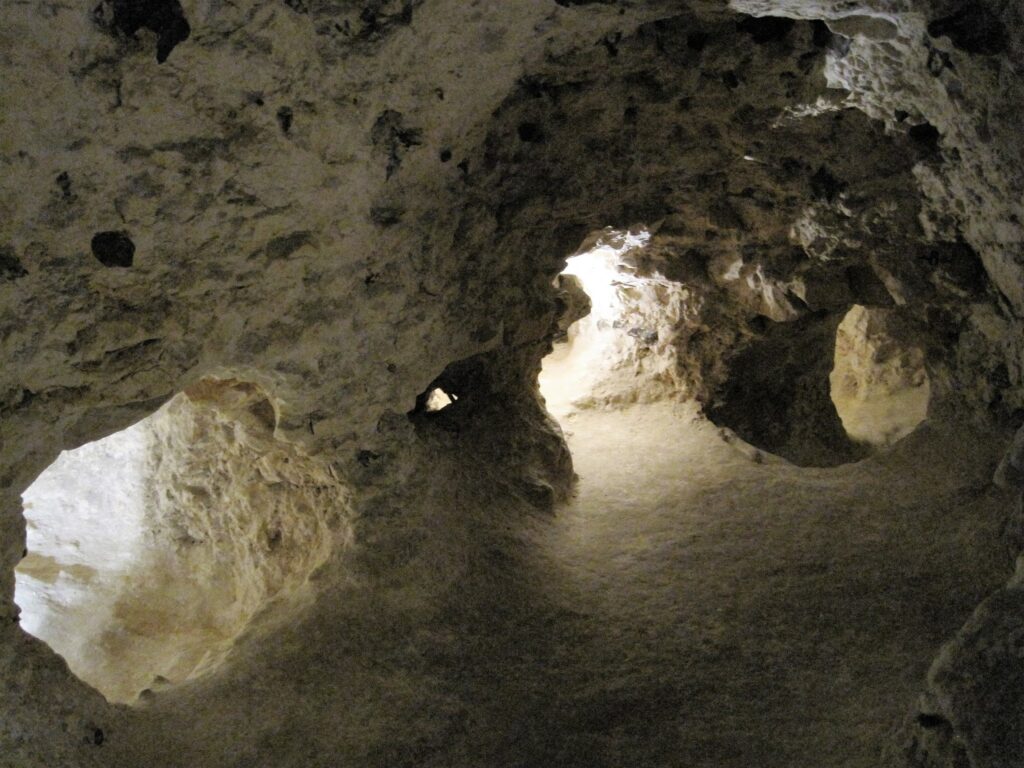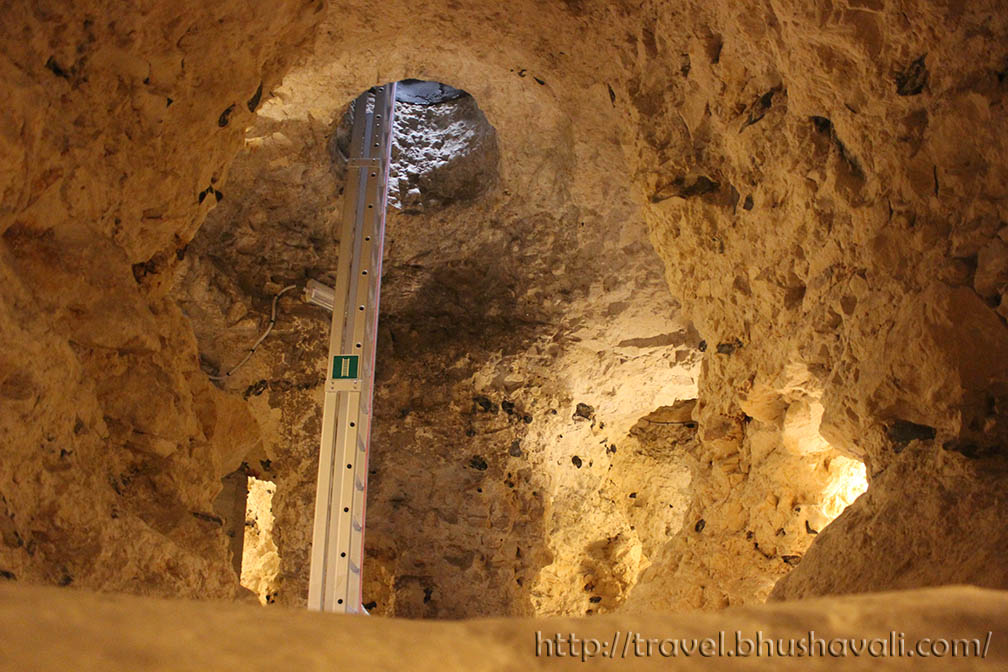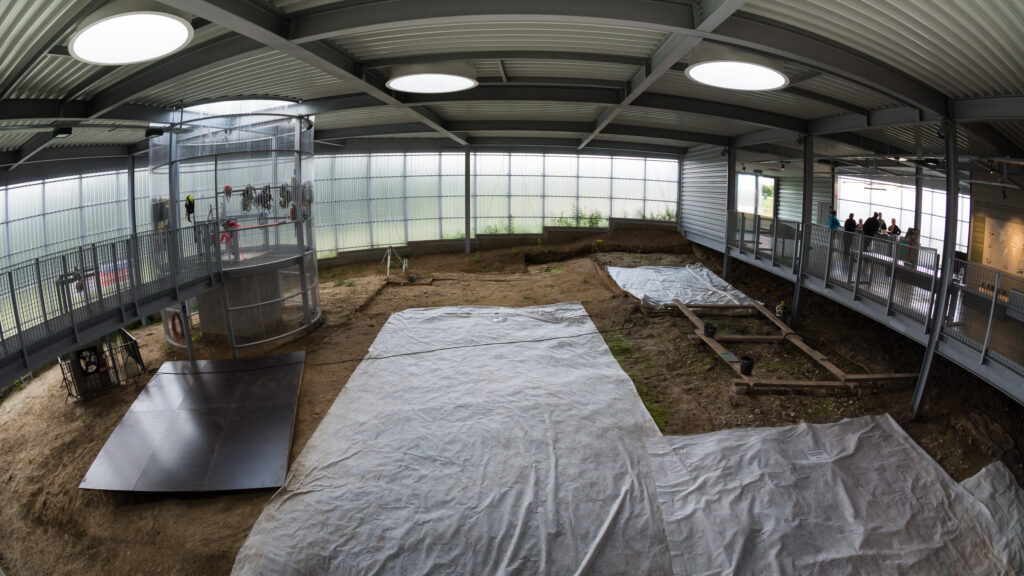The Neolithic flint mines of Spiennes are among the largest and earliest Neolithicflint mines which survive in north-western Europe, located close to the Walloon village of Spiennes, southeast of Mons, Belgium. The mines were active during the mid and late Neolithic between 4,300 and 2,200 BC. Declared to be “remarkable for the diversity of technological solutions used for extraction” the site and its surroundings were inducted into the UNESCO’s list of World Heritage Sites in 2000.
he Mines of Spiennes cover some 100 ha (250 acres) of downland four miles south-east of the city of Mons. The site is dotted with millions of scraps of worked flint and numerous mining pits, that Neolithic settlers have gradually turned into vertical mine shafts to depths of over 10 m (33 ft). Underneath is an elaborate man-made network of caverns accessible via the many shafts.
A seminal stage of human inventiveness, technological and cultural application and progress, the transition between opencast and underground mining for flint nodules is impressively displayed and documented. Research has illustrated Neolithic techniques for the cutting of the flint and the extraction of large slabs of flint, that weighed up to hundreds of kilos. The nodules were extracted using flint picks. The stones were then knapped into rough-out shapes of axes, and finally polished to achieve the final state.



